At ScaleMath, we’ve used content to drive growth for more than just a handful of companies, so we’ve seen what works and what doesn’t. In this post, we’ll walk you through ways to validate blog post topic ideas.
Whether you’re sporadically getting potential topics from upper management looking for ways to qualify (and disqualify) topics, or just generally looking to align content better with business objectives matched with search potential – you’ve come to the right place.
So, to avoid wasting time and effort producing content that achieves little to no value – here’s our 3-step process to validate blog post ideas:
How to Validate Your Blog Post Topics – Our Process
Your blog post topic ideas may come from a keyword research & content strategy sprint, or from a pain point a lead discussed with your team on a demo call. But in either case, such topic ideas should undergo a process to validate that they are in fact suitable, and to confirm that they are worth taking the time to produce the content for.
1. Truly understand your audience
Unless you have a deep understanding of your target audience, it’s going to be difficult for you to write content that will resonate with them. Some of the best-written blog posts are ones that provide solutions to common problems and empathize with readers.
If you have an interesting idea for a blog post, there are a few questions that you need to ask first. These include:
- What is the ideal reader persona that you’re targeting? What demographic do they fall into?
- What information do you want to deliver to your readers?
- Is the blog post going to elicit a specific response from your readers?
These are simple questions but will help you understand how you want to approach a particular topic. Once you have a clearer understanding of your ideal reader persona, you can move to the next step.
2. Sense check your ideas to ensure that your ideal customer profile would be interested
Sense checking means evaluating if a particular topic makes sense to your ideal customer profile. Once you understand the demographic (and pain points) of your ideal reader persona, the next step is to determine whether the topic makes sense to a particular group or not.
This can be tricky. At ScaleMath, we’ve often been approached by clients who believe they have an interesting idea that is great for SEO. But, you also need to make sure that the topic resonates with your audience. Otherwise, it often ends up serving little to no business value — this is particularly true in the early stages of a startup.
Thankfully, there are many ways of figuring out if your ideal customer profile would be interested in reading about a particular topic. Twitter, for instance, offers a treasure trove of relevant information.
You can host Twitter Polls to find out which topic your audience may want to read about. In most cases, Twitter lets you get a pulse of what’s trending. By simply reviewing trends and what people are Tweeting about, you can gain a better idea of what to write about.
If you have enabled commenting on your blog, you could also gather lots of relevant feedback from your audience. Engage them in conversations, asking for their opinion to gauge interest in a particular topic.
And, if you have a social media presence, you may want to tie that into your strategy too. Ask your audience what they’d like to read about, the topics that interest them, and use that feedback to play a role in informing your content strategy.
3. Use search data to validate all of the above and prioritize based on demand
By now, you will have a fairly comprehensive understanding of your audience and the kind of content they want to read. While it might seem enticing to pump out content as much as possible around a certain topic, it’s important to prioritize because realistically nobody works with unlimited resources.
It’s highly likely that you’ll end up with a topic cluster, which is simply a group of different topics that are connected through one particular topic or subject. How do you know which one to tackle first?
To figure this out, you will want to take help from a tool such as Ahrefs. Ahrefs is a fantastic tool that lets you analyze search volume for specific keywords. This can help you gauge just how much interest there is in a particular topic.
It also gives you insights into pieces written by your competitors, so you’ll have a better understanding of how much depth your article needs to have for it to rank better. For instance, if you search for “headless WordPress”, here’s the search data that Ahrefs shows:

If you’re new to Ahrefs, or SEO in general, the above may seem a bit overwhelming.
Here are some notes:
- The keyword itself is quite hard to rank for. Ahrefs suggests that you’ll need backlinks from ~ 51 websites.
- You can see that the global search volume is around 800, with the highest interest from the United States and the United Kingdom.
- You can also see a bunch of matching terms along with their search volume. It might be a wise idea to incorporate some of these into your blog (if doing so would be natural/required to cover the topic)
If you go further down, you’ll see the top-ranking posts for this keyword. Here’s how it looks:
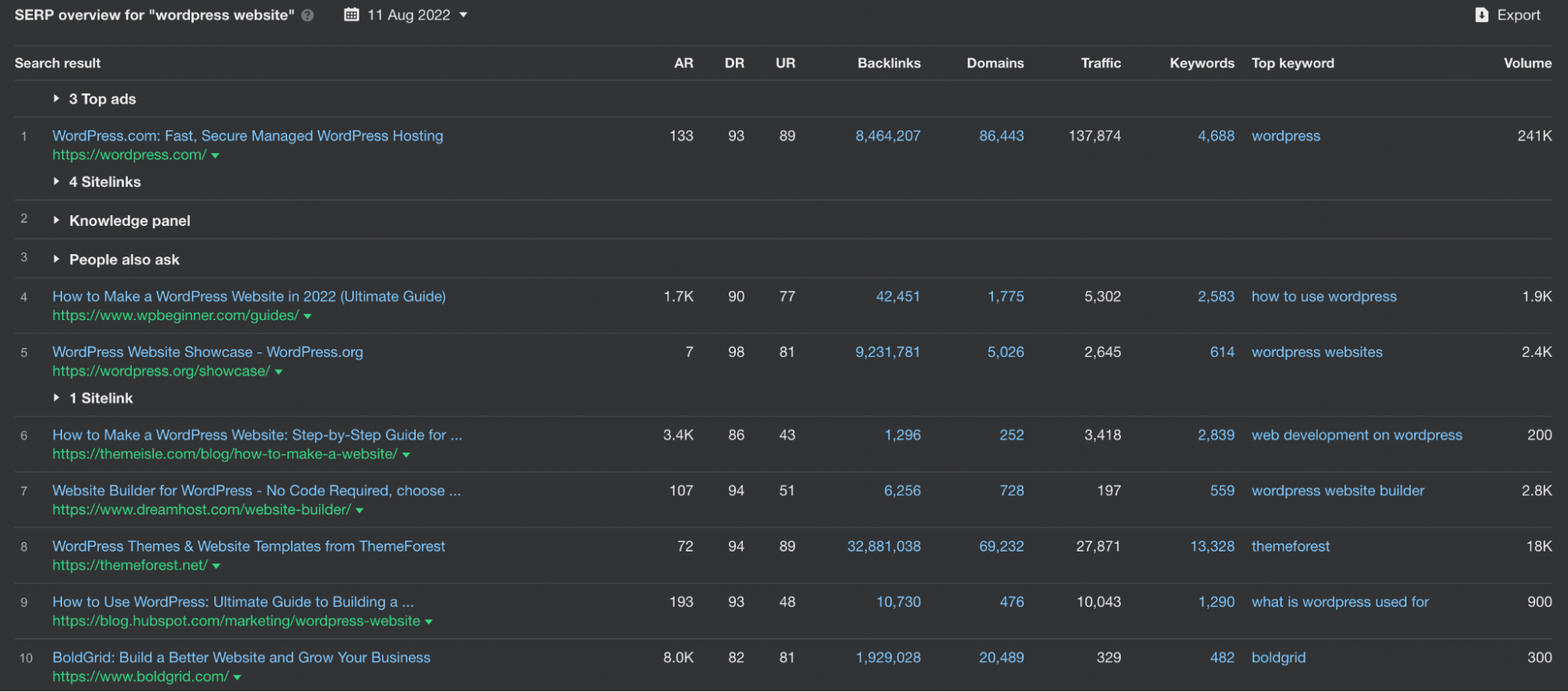
These are all ranking articles, so you can review these to better understand the depth of content that you need to write. You can also see the traffic estimates for each site, which will give you a clearer idea about the demand for a topic.
Note: This particular topic example we used is a great example of when search intent comes into the picture which is evaluating the SERP to determine whether ranking for a particular search is even possible based on being able to fulfill the intent. In this case, with WordPress.com’s homepage being #1, this specific search wouldn’t be a great one to go after (some would argue the intent type here is navigational, which is why WordPress.com’s homepage comes up first). But…
Your post is almost definitely not focusing on a single keyword alone.
4. Long-Tail Keywords vs. Short-Tailed Keywords
When trying to validate any new blog post topic ideas, it’s also important to review both long-tail and short-tail keywords. The primary difference between the two is that the former generally contains four or more words.
Naturally, long tail keywords are more targeted in scope than short tail keywords, which only consist of one or two words. For instance, “marketing tips” is an example of a short-tail keyword.
Consequently, “design agency marketing tips” narrows the scope a bit, but lets you identify the exact points to focus on in your article. Ideally, when validating a blog post topic, you want to target a mix or both.
The search volume for short-tail keywords is obviously going to be higher, but since these are so broad in scope, it can be difficult to deliver value. As a result, conversions are generally less.
For long tail keywords, the opposite is true. Search volume may be low, but since you’re targeting search intent so closely, there’s a greater chance of optimizing your web pages.
When validating any blog post topic idea, it’s important that you develop a list of both long and short-tail keywords to target. If you can’t find many for a particular category, you may want to re-evaluate your decision.
5. Monitor Google Trends
Google Trends is a great tool for identifying the latest trends. It can also serve as an important validation filter, helping you validate ideas that you’re already thinking of writing about.
Here’s a broad example:

The trends above show how interest in the topic of “marketing tips” has wavered over the past year or so in Canada. But, this is generally a broad topic, so it’s hard to identify what to focus on. If you scroll down, you get a better understanding:
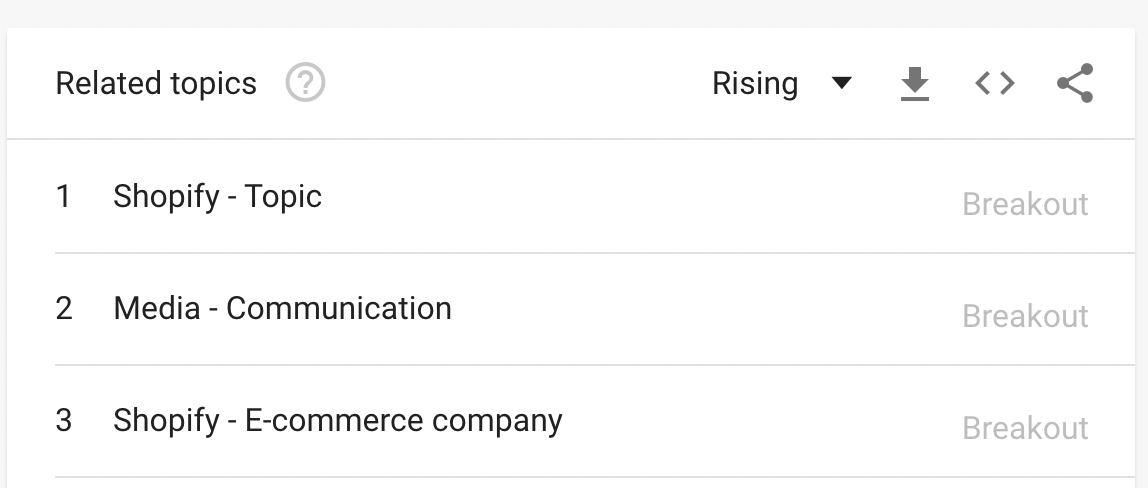
Now, you can see that Shopify is a hot topic right now, which means a large part of the audience is actively searching for it. Naturally, your posts will rank higher if you can focus on what the audience is searching for.
6. Develop an Ideal Customer Profile
Before you start working on any blog post, you need to first develop an ideal buyer persona profile. This doesn’t just include your existing buyers, but also those who might be potentially interested in buying your products or services.
If you don’t have an ideal customer profile, it’s going to be difficult for you to write relevant content. Here are some simple steps that can help you build one:
- Research your core audience. Who buys your product/service? What industry do they belong to?
- Identify their biggest pain points. What can you do to alleviate them? How can you position your product as a potential solution?
- Gather demographic information. You should know about their age, income, gender, education, and region.
Once you have all of this information, you can then use it to create content that you think will appeal to your ideal buyer persona.
Psychographics also play an important role when validating blog post topics. Psychographics are different from demographics. The latter generally focuses on objective information, such a buyer’s age or gender.
Psychographics can help you identify their pain points and figure out why a particular demographic may be interested in your product. Psychographic profiling, for instance, can be a great asset, as it’ll help you identify what motivates your ideal customers to make the decision to purchase your product.
7. Analyze Existing Content Online
If you’ve come up with a blog post topic idea that’s already been extensively covered by competitors, you’ll have a hard time getting your blog post to rank.
Simply writing “more of the same” isn’t going to cut it. By analyzing existing content online around a particular topic, you can figure out content gaps or areas where you can add value.
This, then, can be used to create a new blog post from scratch. Using psychographic profiling, you can essentially “personalize” a topic to cater to your audience, and add value to a particular piece.
If, however, you have nothing unique to add to a topic that’s already been extensively covered, it might be a wise idea to look at other alternatives.
8. Work on Developing Topic Clusters and Pillar Posts
A pillar post is a detailed blog article that covers various topics in a comprehensive blog post. It touches on various different topics that would fall under a cluster of its own.
Developing pillar posts and linking out to other topics is an excellent idea. Not only will it help in improving your website’s internal backlinking profile, but it will also help you identify important topics to target.
Covering an entire cluster in detail is obviously better and will help you build a strategy to focus on. You can then write on other topics that fall within the cluster and link out to them through your pillar post.
9. Use Blog Comments and Social Media Discussions to Identify Your Audience’s Requirements
People often leave comments on different blogs, including yours and your competitors’. While these are a great indicators of engagement, you may want to analyze the comments to identify your audience’s key pain points.
It can help you understand their requirements better and figure out exactly what your audience is concerned about. This can help you figure out if a new topic is warranted, or if you can cover these pain points in an existing piece.
You can ask questions on Quora, check Reddit discussions, or just go through the comments on your blog (and your competitors’ blogs) to get a better understanding. Think of it as an additional filter to really identify what your audience’s concerns are.
Another way to go about it would be to create polls on platforms like Twitter or Reddit. If you have a decent following, this can help you gauge the audience’s interest in, and response to, a particular topic.
Here’s an example:
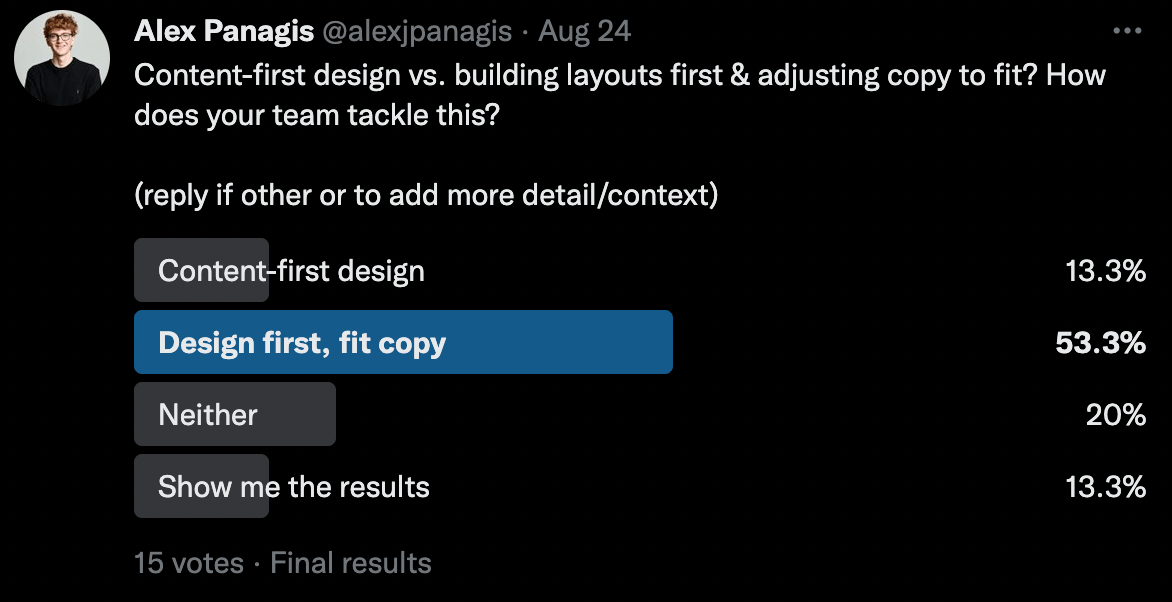
As you can see, this post had considerable responses from a qualified audience. As a result, it’s easy to see that there’s interest in the topic, so it’s worth writing about once you vet it by running other checks as discussed in this post.
Use AnswerThePublic.com to Find What People are Searching For
Another way to determine what people are talking about and regularly searching for is AnswerThePublic.com. For instance, when you search “shopping cart abandonment”, it shows the following results:

This can help you get a pulse for the most common questions that people want answered in relation to a particular topic. This can help you determine if there’s considerable interest in a post, and then decide whether to write on it.
10. Use BuzzSumo to Research a Topic In Greater Depth
BuzzSumo is a fantastic tool (a free trial is available!) that you can use in tandem with Ahrefs to research a topic in greater detail.
In the following example, we searched “shopping cart abandonment”:
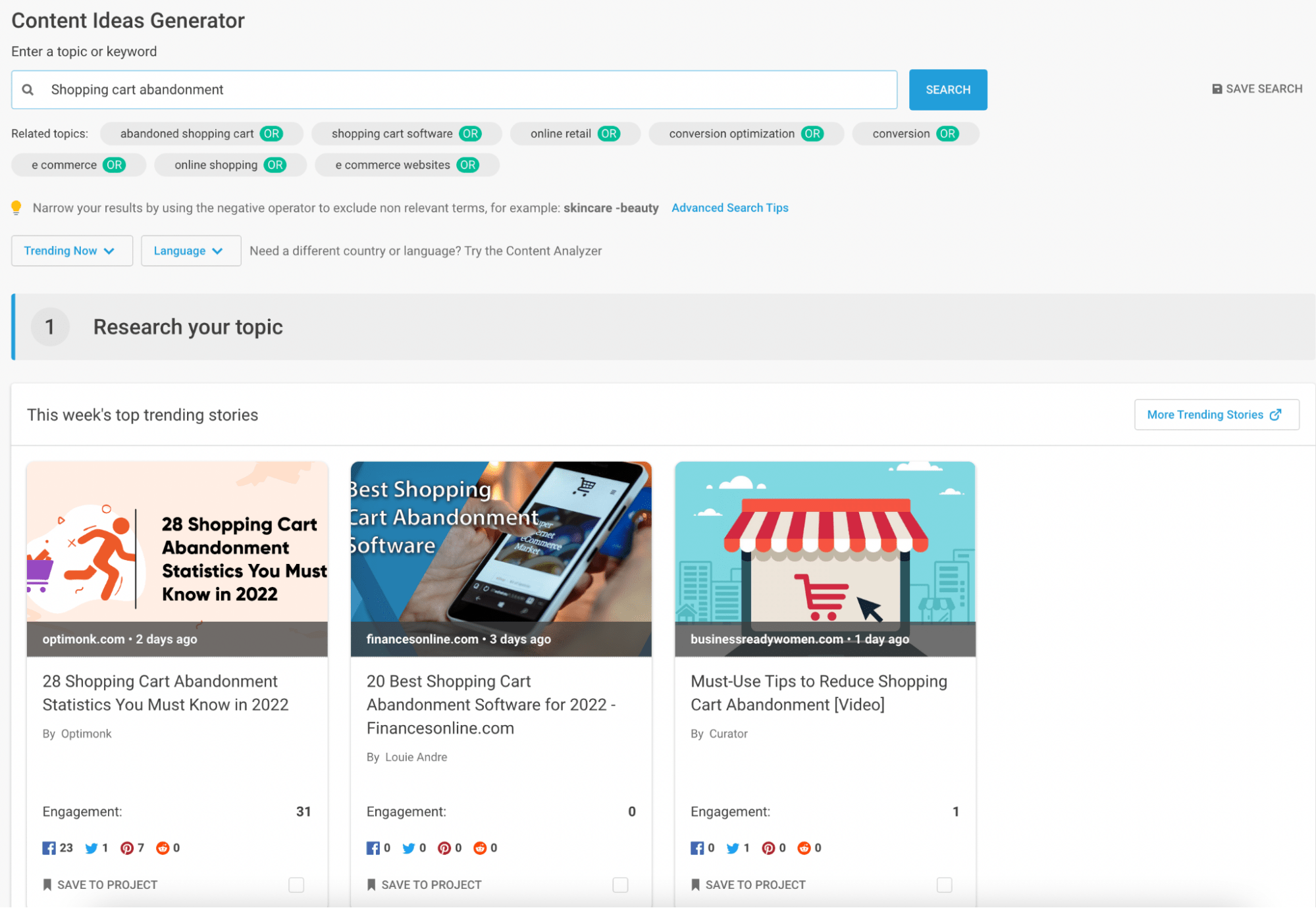
As you can see, it tells you about the latest articles that are trending, and even gives you greater insights:
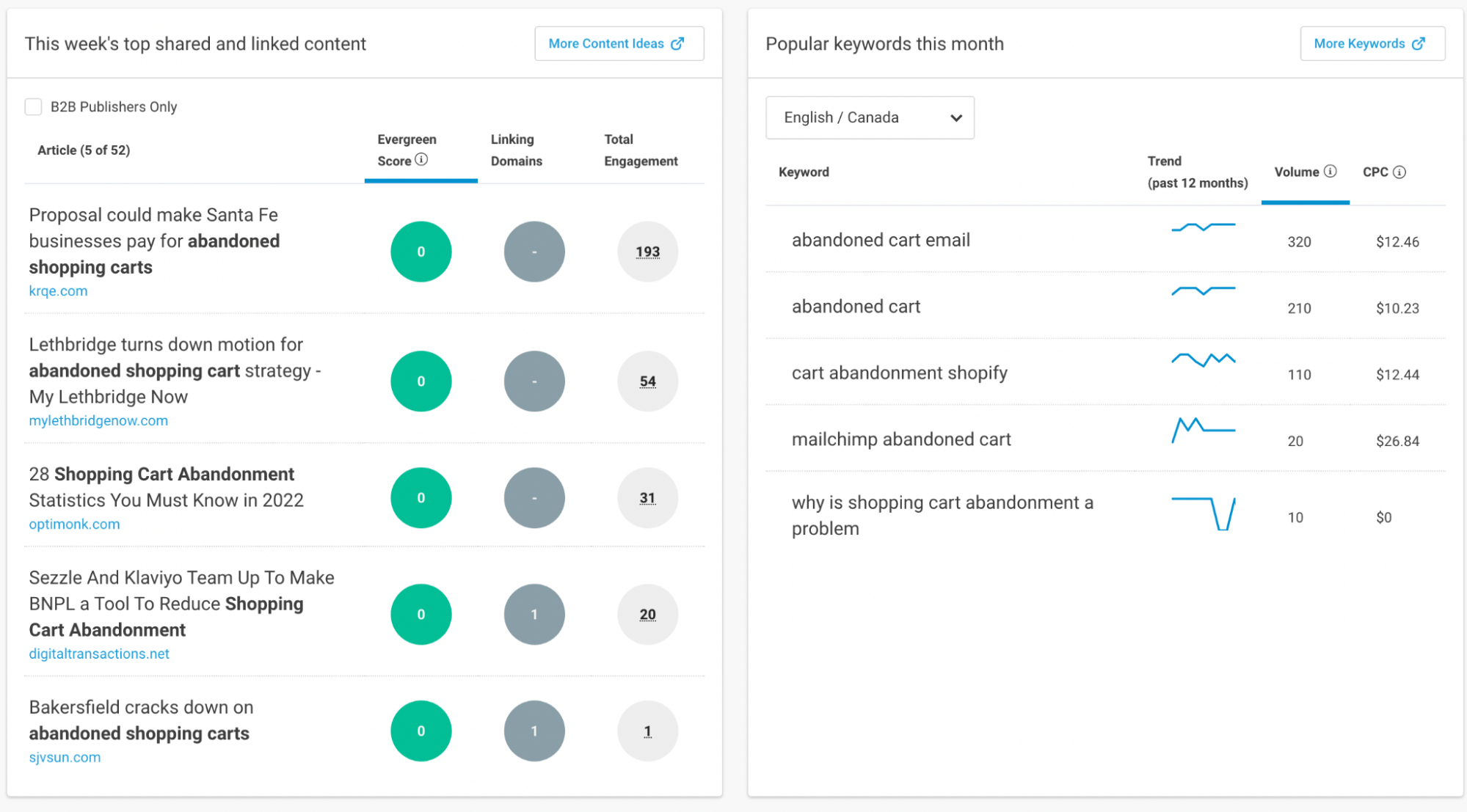
Now, you can see the popular keywords trending in a particular country, evaluate the latest articles and, more importantly, you can even see the outline structure for the top-ranking pieces on this keyword:
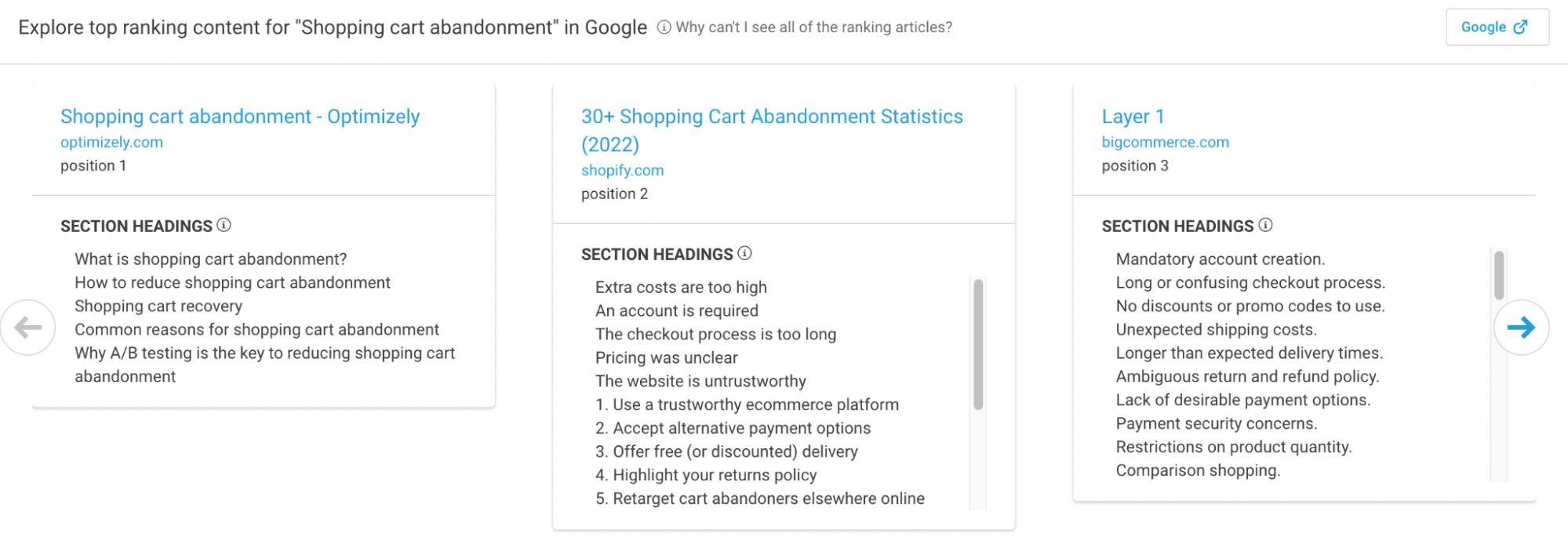
You can also use it to generate ideas around a broader topic. For instance, if you choose “shopping cart abandonment”, the results are as follows:
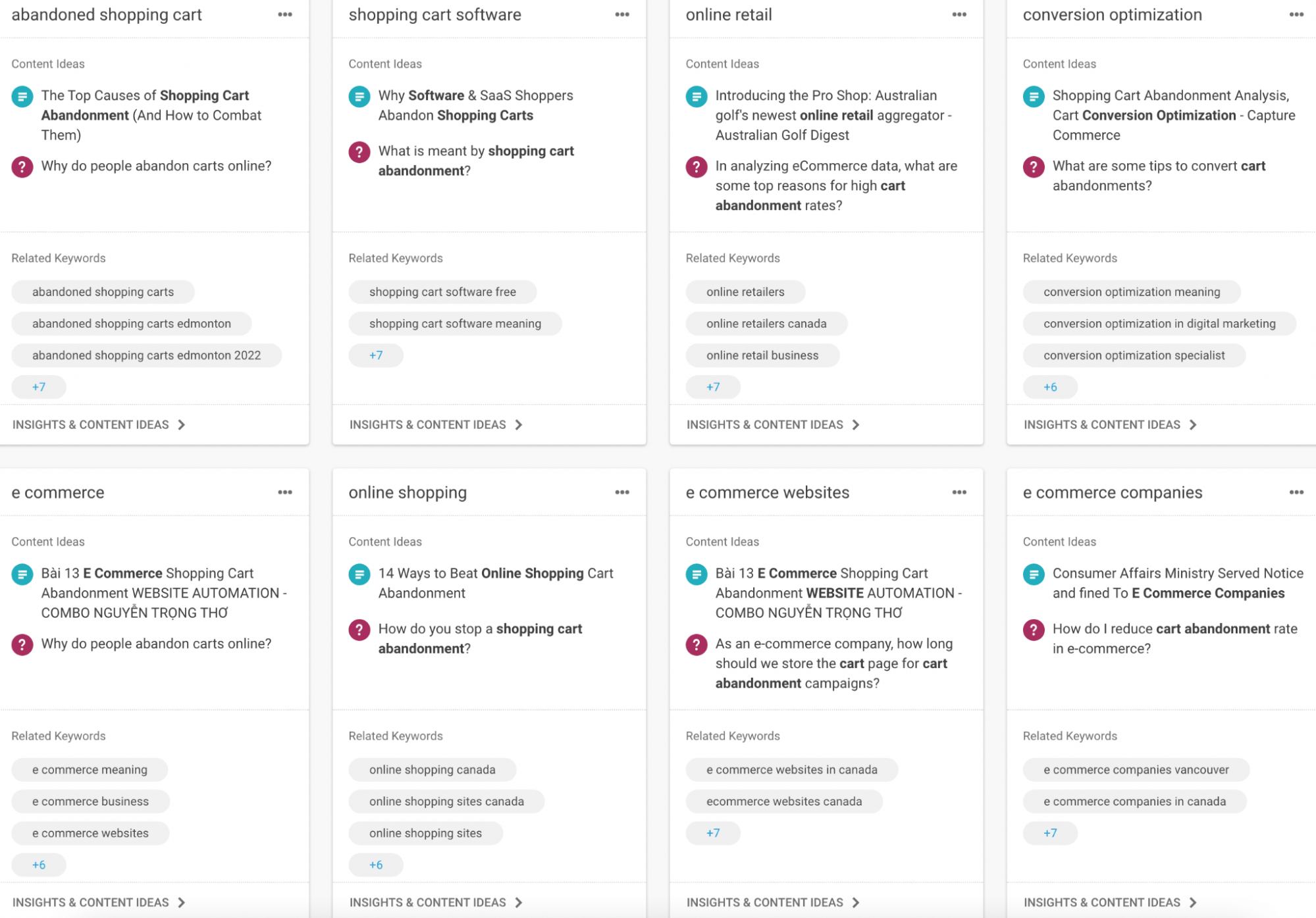
For each of these, you can view insights and evaluate engagement and research your competitors in greater detail. You can then use this information to validate your idea and determine if it’s worth writing based on the competition.
11. Use Google Alerts to Monitor Your Competition
Google Alerts is an excellent tool that you can use to create alerts for your competition. Whenever they publish a new post, you’ll receive an alert.
While this isn’t exactly a method for validating blog post topic ideas, you can use it to gain a better understanding of what your competitors are writing about. You can then use this information to create your own outlines and target relevant keywords.
12. Use Google Keyword Planner to Identify Effective Keywords
Google Keyword Planner, now known as Google Ads, is great for identifying relevant keywords.
You must make a company account first, and add a $50 credit, even if you don’t intend to run an ad campaign.
If you want to identify new keywords in Keyword Planner, simply “enter phrases or a URL” that relates to your core topic, and Google will show you lots of keywords.
You can see average monthly searches, the range for different bids, and even the competition for each keyword.
Another method is to use a freemium tool like Keyword Tool. It uses Google Autocomplete to give you relevant results. Of course, to get important details like competition or total search volume, you’ll have to upgrade.
But, for a free alternative, this is great. It shows you the average CPC for each keyword, search volume, and the recent trends for the top-ranking keywords around a topic.
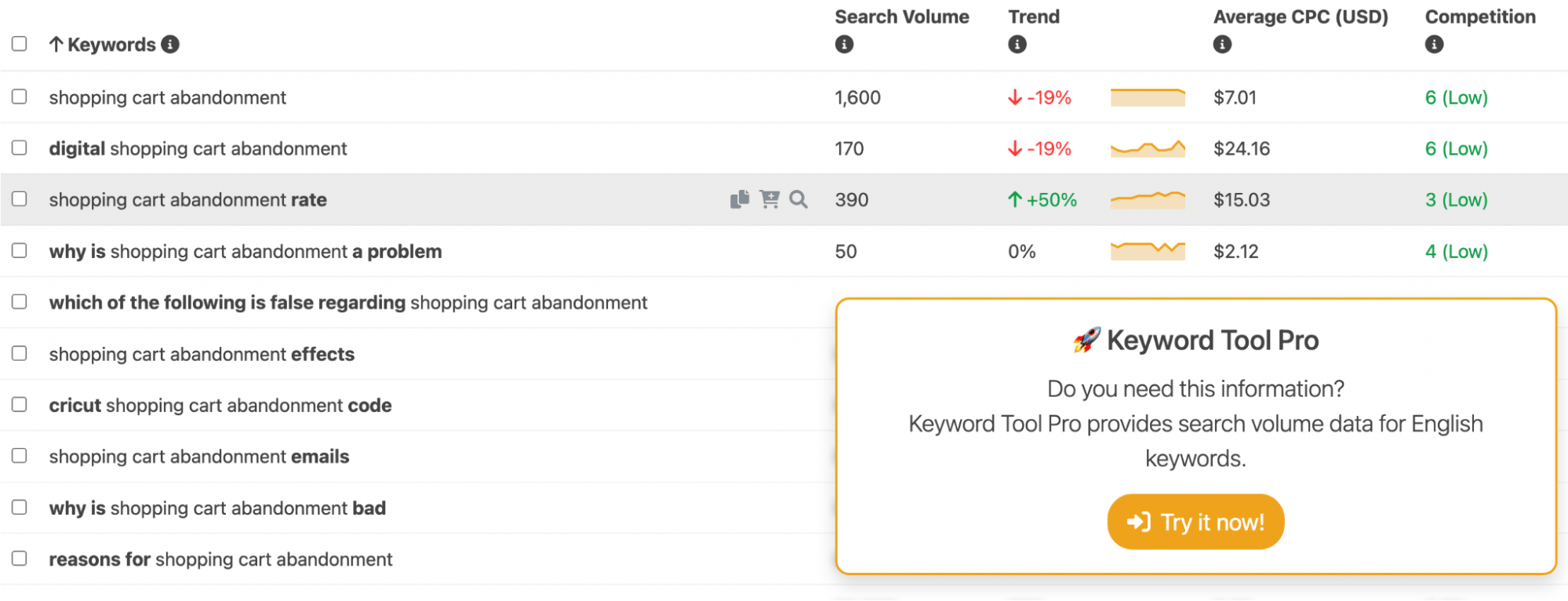
Develop a Content Strategy and Be Consistent with Your Posts
Learn more about how we approach content strategy at ScaleMath in this post where we break down the approach we use to align product approach with content & SEO
Of course, validating topic ideas is one part of the equation. Bringing your strategy and overarching approach to life is what really matters. We hope you’ve found this guide useful as an overview of how we validate blog post topic ideas. You may want to take comfort in there are very few out there that are really doing an incredible job with content which means if you are up for a challenge, willing to dig deep (whether that’s with help or on your own), getting to know your reader, it’s possible & the sooner you get started, the easier it’ll be.
👋 Looking for input from a team that’s worked with category-leading companies – possibly like yours? We’re here and always happy to help! Use the contact widget in the bottom right-hand corner to get in touch or apply to work with us here.







